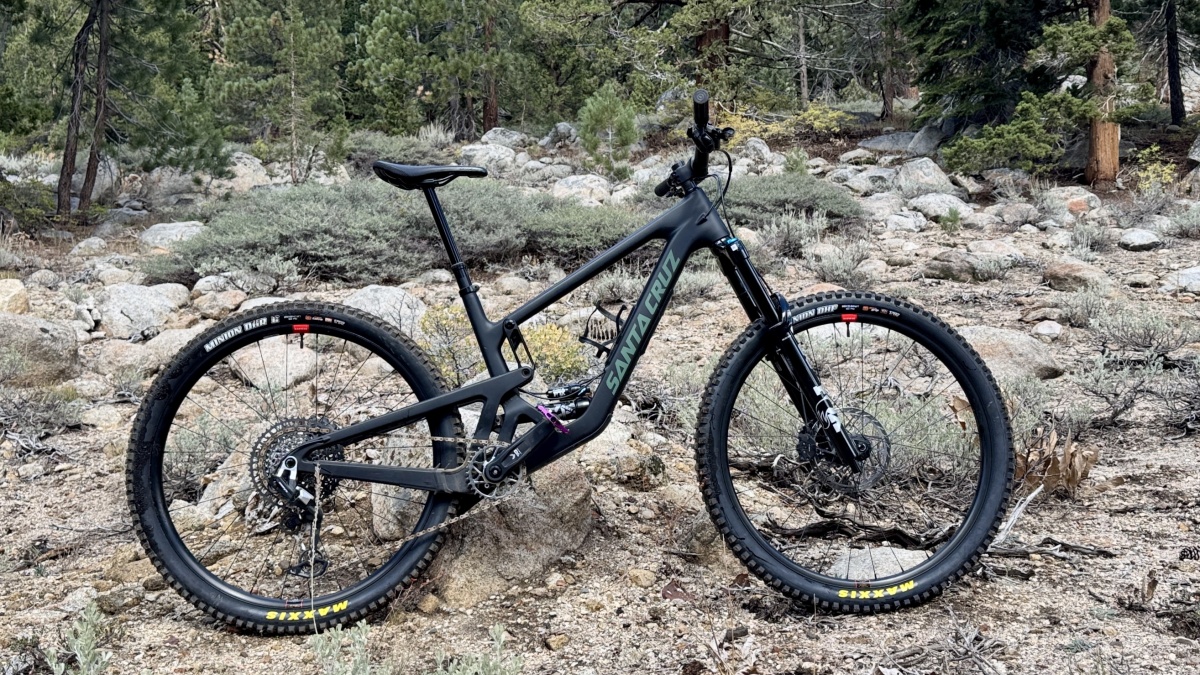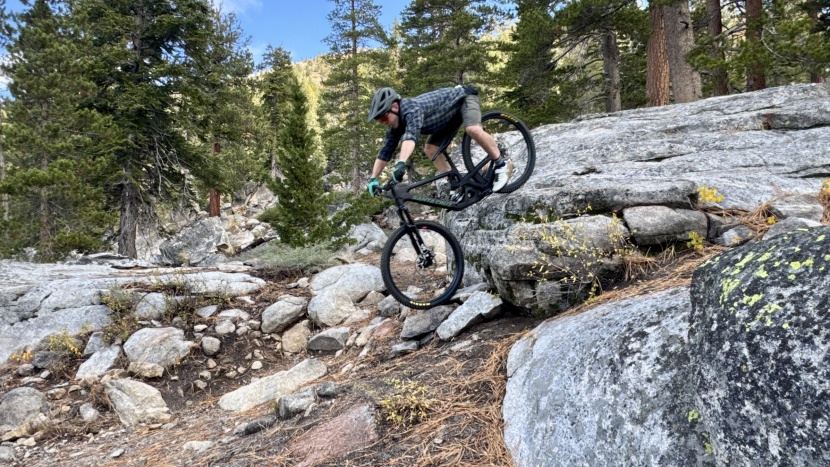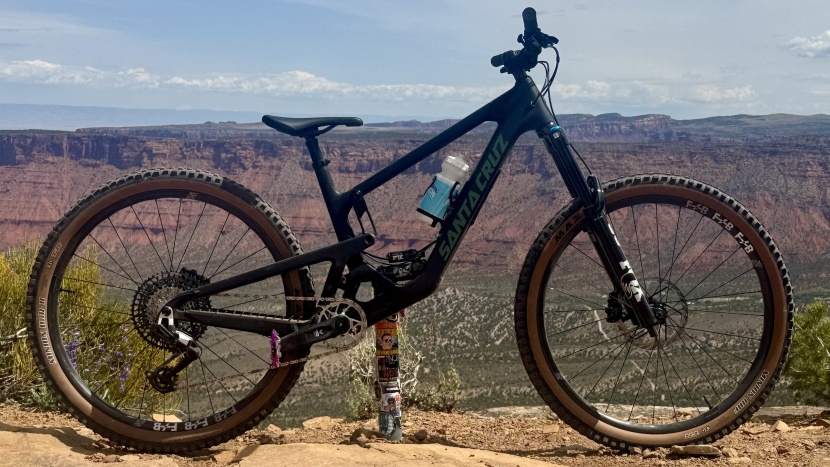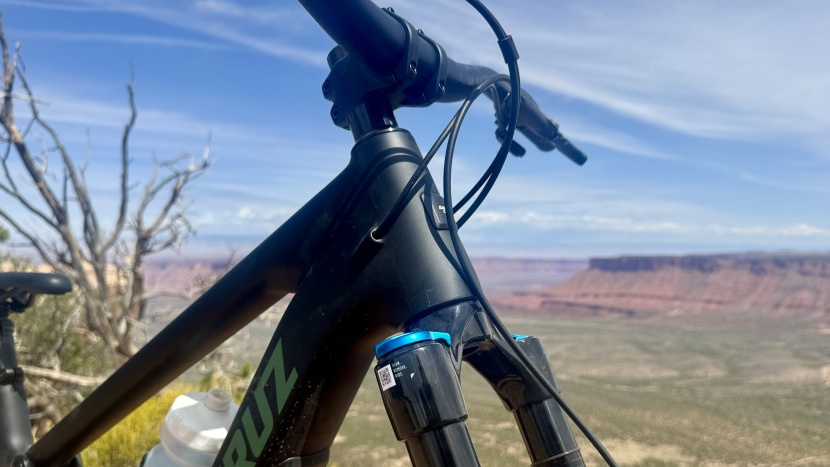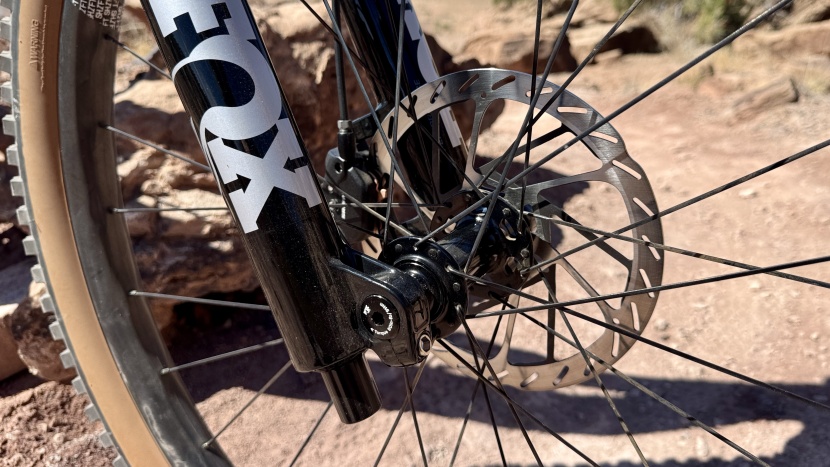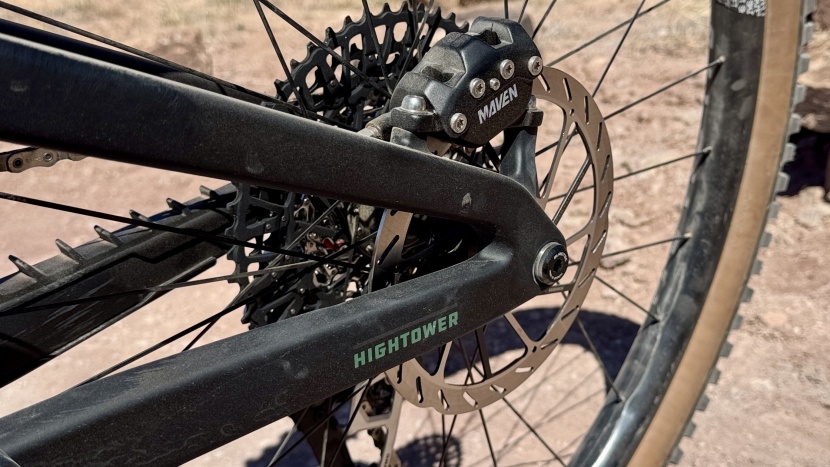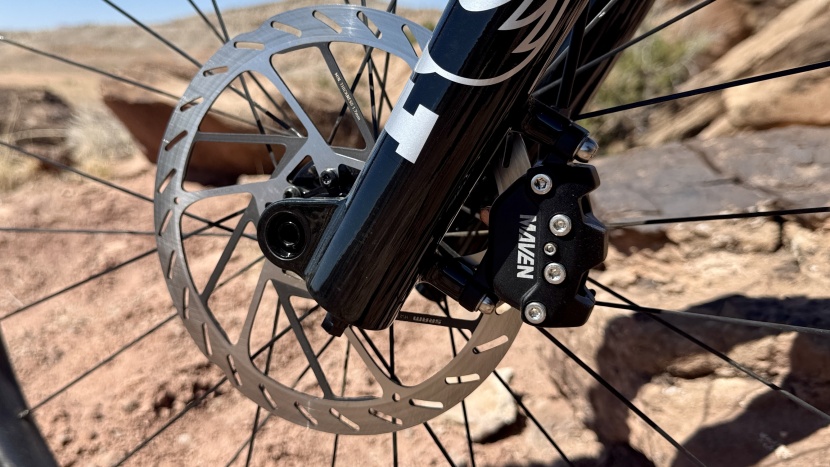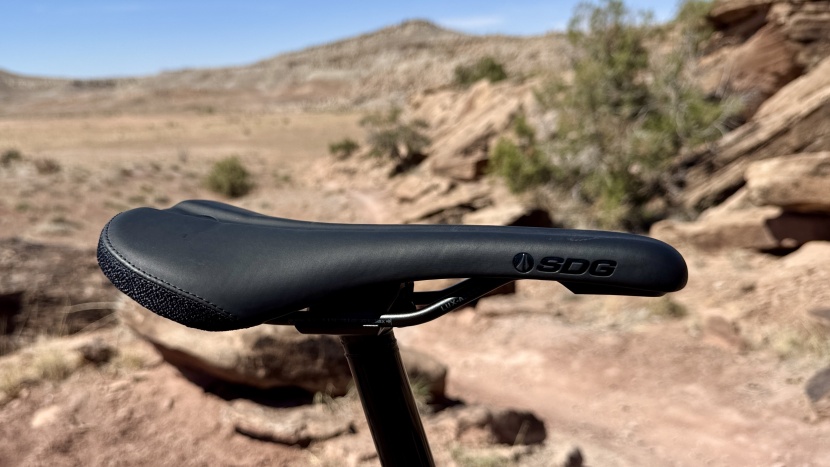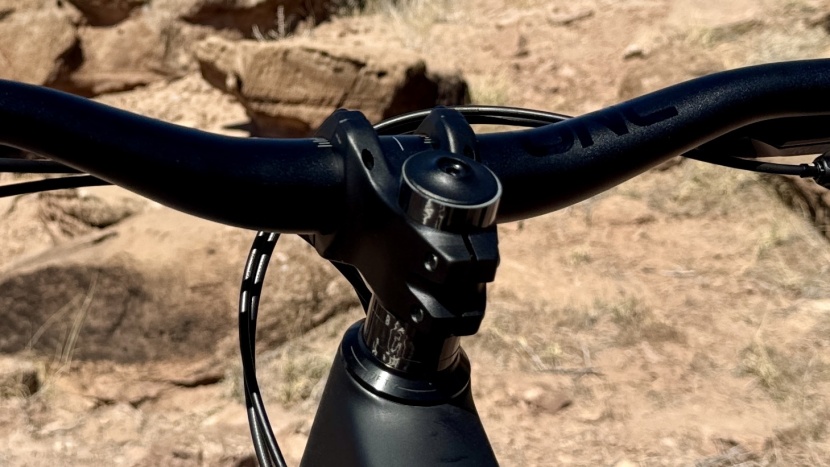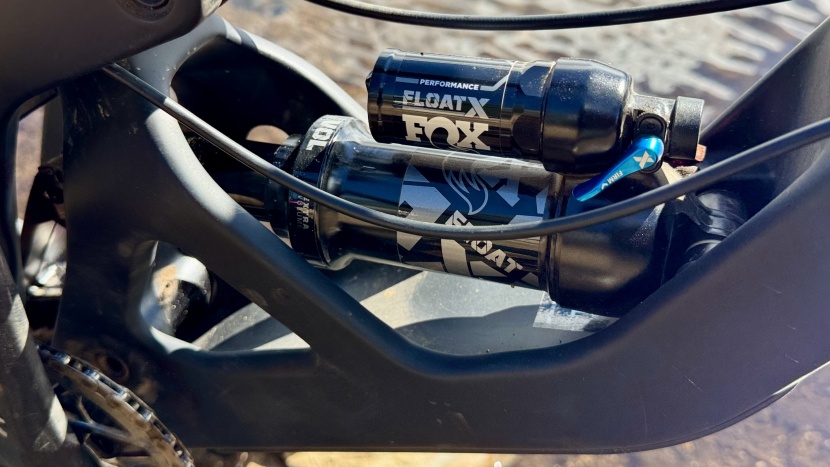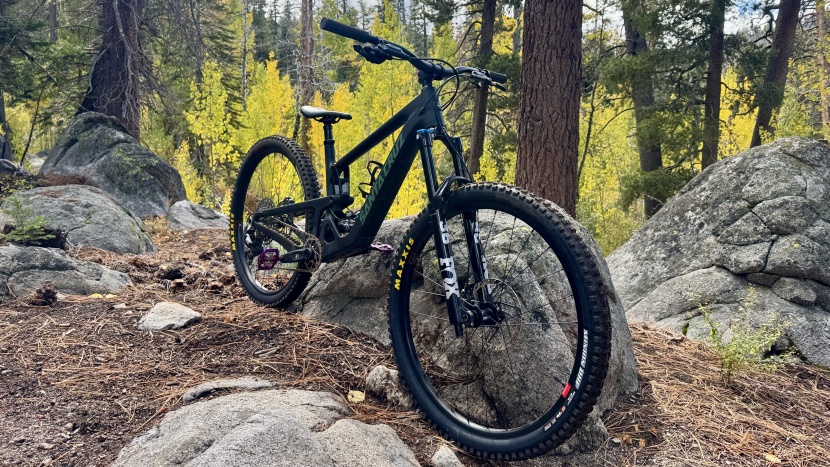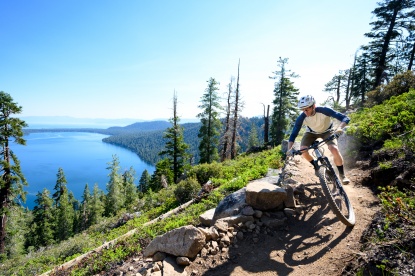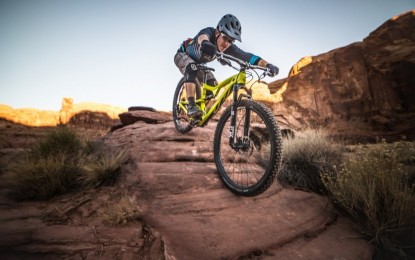
Our Verdict
Our Analysis and Test Results
Should I Buy This Bike?
A trail staple, this is the 4th Santa Cruz Hightower I've had the pleasure of reviewing for GearLab. Santa Cruz pushes the envelope a bit further with each generation of their big wheel, trail bike. This bike gains an additional 5mm of travel, a 160mm fork, and even slacker geometry with the latest iteration of their super-low-slung VPP. This bike caters to the rider who charges big lines, puts it all out there, and demands a bike that feels stable at the extreme edges of performance. Chomping at the heels of the Megatower, the new bike has enhanced capabilities but also sits in a much more crowded field of capable trail slayers. A flip chip in the rear linkage allows you to take the bike from slack to slacker.
The ride feel is wide open, uninhibited, and hard-charging; the more input, the more reward. At speed, the bike remains composed and stable, where other platforms often falter. The Hightower has never shied away from big lines or risky moves, but the new bike is even more courageous. There's nothing nervous about its handling, and its stability is front and center when you have the pedal to the metal.
Frame Design
The new Hightower uses the latest generation VPP platform, moving the shock and lower pivot as low as possible. The low-mount shock connects via a flip chip on the lower linkage, allowing you to tune its rowdiness. The headtube angle continues its multi-generational trend of slackening, now at 64.2 degrees in the high setting and 63.9 degrees in the low setting. The seat tube gets even steeper at 78.2 degrees on our size Large test bike; with the flip chip in low, it drops to 77.9 degrees. 480mm of reach and proportional geometry ensure every size has a unique rear center and ample room in the cockpit. Our chainstays measured 439mm, just a small portion of the bike's whopping 1264mm wheelbase, making this the longest trail bike we've ever tested.
I spent more than a few rides figuring out how to tell you this length isn't a good thing, struggling with switchbacks, finding it harder to manual, and feeling less maneuverable. Instead of cementing my thesis on the downside of long wheelbases, I came to love the feel of this bike. The above criticism isn't wrong, but the benefits to the bike's stability and poise are palpable. Shy of the geometry, the bike isn't packing too many surprises. Internal cable routing, 148mm rear end, threaded bb, downtube glove box, finned chainstay guard, downtube armor, and 180mm native mount for the rear brake are all about what you'd expect for a bike in 2025.
With its low center of mass and a fair amount of overlap in the front and rear triangles, the linkage exhibits minimal torsional flex. This gives the frame a stout, engaged feel that feels active but never flexy. The shock being located so deep in the frame does create a couple of issues. First, it sits directly in the path of rear-wheel spray (though a small fender helps). Second, it makes the climb switch difficult to reach on the fly, forcing you to put your face perilously close to the handlebars.
The Hightower frame in C carbon comes in just below 7 pounds, which isn't exactly light, but feels like a reasonable sacrifice for the bike's composure. The C and CC frames look similar, with the slightly lighter and more expensive CC frame eschewing cable routing for a derailleur. Santa Cruz claims that both frames offer the same ride quality and flex characteristics. Our size Large, complete with the SRAM 90 build tips the scale at 34.2 lbs.
Design Highlights
- Carbon fiber C (tested), carbon fiber CC available
- 29-inch wheels only
- 150mm of 4th generation VPP travel
- UDH (derailleur cable routing only on C frames)
- Designed for 160mm fork
- Flip-chip geometry adjustment
- 2.5" tire clearance
- Frame only in C carbon for $3599 and CC for $4049
- Complete bikes priced from $4,999
- Glovebox downtube storage
Downhill Performance
Oh boy.. The new Hightower only picked up a tad more travel, but it feels like this bike flaunts it. Unlike so many modern trail bikes that feel overly reliant on compression dampening, the Hightower gives you a wide-open feel that lets you push your (and the bike's) limits. The slack (64.2/63.9) degree headtube and generous-feeling rear end let you pilot the bike with reckless abandon. Excellent small-bump compliance lets you float over minor obstacles and focus on the bigger lines; the new Hightower feels made for them. Part of the reason they lowered the shock and suspension linkage in the 4th generation VPP is to provide less anti-squat, and it's noticeable. Even though the bike has picked up travel, it's quick on the gas out of the corners, and there's noticeably less pedal feedback.
In comparison to the previous model, the size large picked up 12mm of top tube and 2mm of rear center; factor in the slacker front end, and this bike is exceptionally long! Despite my initial impressions and preconceived notions about the length, it certainly contributes to the bike's downhill prowess. The geometry and kinematic changes come together to give the bike a bit more traction and a lot more courage. While the last Hightower wasn't shy on bravado, it wouldn't be my top pick for riding into unknown territory. The new Hightower hasn't lost much of its agility, but it's picked up a capability that gives it a higher speed limit. There is noticeably better traction in rough terrain, and limited anti-rise gives the bike excellent manners when you need to grab a handful of Maven.
While the bike is content to cruise along gentle ribbons of single-track, it's itching for steeper terrain. It's not unenjoyable to ride mellow bits of trail, but the geometry makes it seem almost boring. In slow sections of trail or technical tree slalom areas, the bike feels less sporty and agile but every bit as fast. The Hightower wants you to point it downhill; it wants you to slash turns, whip corners, and escape gravity. The low bottom bracket keeps your weight centered deep in the bike, but it's only 2-3mm higher than the past model. Since we now have a longer wheelbase and more travel, it results in a lower breakover angle. We found that riding in the lower setting made us far more susceptible to pedal strikes than we'd prefer.
The bike rides relatively high in its travel and doesn't require a ton of compression damping from the Fox Float X to keep it pedaling well, making it feel like a good compromise between responsive and plush. The 4th generation of VPP bikes aren't shy with travel, and all 150mm feels readily available; yet, it never feels like it's wallowing. The suspension curve doesn't ramp up too fast, pop up to sprint between jumps, and the bike gives you punchy acceleration. Kick back to manual a rock garden, and the rear end drops away into a bottomless feel, letting you levitate over nasty chunder sections. The bike rewards hard inputs; more aggressive riders can get a lot from this platform, while less aggressive riders will have plenty of fun but won't fully appreciate where this bike truly excels. This is the opposite of our experience with bikes like the Specialized StumpJumper 15, which are fun and adept for most riders. However, more aggressive riders fight the shock curve and discover the bike's speed limit.
Our test bike uses the SRAM 90 build, the first of the mechanically controlled Transmission drivetrains, and it's spectacular. It's always a challenge to find the build that delivers the best performance for the dollar, but this build nails it. A new Fox 36 Performance fork gains some chassis rigidity, which significantly improves handling at this headtube angle while maintaining responsive steering. The Fox Float X Performance shock seems ideal, and while it has a climb switch, we found little reason to use it with the bike's positive anti-squat performance. Stepping up to a higher build provides more suspension adjustability, particularly the ability to adjust low-speed and high-speed compression and rebound separately. SRAM Maven brakes are an absolute delight. If you have yet to ride these brakes, they're a game-changer for descending control. It's not uncommon for a rider sampling them for the first time to deem them “too strong”, but when we pull hard on a brake lever, we're pulling the palm of our hand into the handlebars. This action puts pressure on your medial and ulnar nerves, creating a dull numbness that can make your arms feel fatigued. Reducing the power needed to pull the brake lever reduces fatigue and helps eliminate the numbness that can develop during an extended descent.
The cockpit is entirely OneUp with innovatively shaped 800mm alloy bars that provide directional flex with 35mm of rise, and the stout 42mm OneUp Enduro stem. A OneUp dropper post provides 210mm of drop on our size Large bike and is amongst our favorite cable-actuated droppers. Reducing its travel is simple, and we've found that extended service intervals keep the post in our bike rather than on our workbench. Santa Cruz Reserve 30 TR Alloy wheels are laced to DT 370 hubs, allowing you to fine-tune the ratchet engagement with aftermarket ratchets. The wheels are clad in Maxxis Minions, a DHR 3C MaxxTerra Exo+ on the rear and a DHF 3C MaxxGrip Exo up front. This feels like an ideal set of rubber for this bike, but riders looking to push the front end harder may want to invest a few dollars more in an Assegai.
The mechanical 90 drivetrain provided flawless shifting and has zero issues shifting under the heaviest of loads. We appreciated having this level of shifting performance without worrying about charging an AXS battery. The shifter has the same amount of throw as other SRAM mechanical shifters, but routes the cable in line with the stealth brake levers, keeping the cockpit tidy. If you're not yet spoiled by push-button AXS shifting, you'll be delighted with the performance of this setup. 170mm SRAM 90 cranks are standard on all models, and they use a steel 32T chainring.
Uphill Performance
What goes down must climb back up the hill, eh? On paper, the changes Santa Cruz made to the Hightower don't benefit its ascending capabilities. The slack/slacker headtube doesn't seem ideal for scurrying up the trail, nor does the 34.2 pound curb weight (tubeless, w/o pedals), but you're reading this review because numbers on paper don't provide the whole story, right? Despite the bikes supple and plush feel on the way down, it sits relatively high in its travel, and the 78.3/77.8 degree seat tube angle puts you in a commanding position over the drivetrain. Even with more travel, length, and weight, the new Hightower doesn't climb any worse than the previous model. It doesn't exactly feel nimble in the techy sections, but it relies more on steamrolling powers than ninja-like agility.
The length of this bike really challenged my preconceived notions about how long bikes handle. Long, slack bikes aren't renowned for their climbing prowess, but despite bottlenecking the switchbacks, the bike is a solid climber. It's less nimble, but that loss of agility didin't really affect my climbing speeds or the fun I was having as much as I thought it would. The Hightower has traded some of its dexterity for brute force, but the suspension enables those brute moves in a way that doesn't make it any less adept; it's just adept in a different way. The 480/477mm reach means the cockpit is open and airy with plenty of space to hop out of the saddle and finesse a move.
The newest (4th) generation VPP suspension platform sits a bit lower in the bike; Santa Cruz did this not only to lower the center of gravity but also to provide a more progressive leverage ratio. The benefits of this change are mostly realized while descending, but the increased sensitivity to small bumps also provides better traction while climbing. In climbing situations where you need to scramble up a steep, loose pitch, the rear tire feels more planted and isolated from the jostling the rest of the bike endures. We didn't feel that it climbed quite as well as the Ibis Ripmo, but it wasn't far behind. In full-power, out of the saddle climbing, the Hightower dips a bit further into its travel, bobbing more than the Ibis on similar terrain. If you're riding a bike that is more than a few years old, you'll be floored by how well this bike climbs.
We loved the build kit on this bike, and it comes together to give the bike climbing performance that doesn't feel compromised. It's not light, but the weight didn't feel like a detriment. We rode this bike for months, swapping wheels and suspension to see how much they affected the bike's performance. While carbon wheels that were a pound lighter certainly improved the climbs, the Santa Cruz Reserve's 370 hubs utilize DT's swappable LN ratchets, which provide 10-degree engagement, balancing acceleration speed with backlash from suspension feedback. The tire selection was perfect for the bike's intended use, and the EXO+ casing on the rear provides enhanced durability when you pick the lines the Hightower craves.
Photo Tour
Value
The Hightower 90 features a C carbon frame and lists for $ 6,099, which doesn't feel outrageous in 2025, but it firmly sits in the premium price market. You can buy the bike in an R trim for $4999 or with top kits from Shimano or SRAM for $11,399. Santa Cruz sells the C frame for $3599 and the CC frame for $4049. We selected the 90 build for the mechanical Transmission drivetrain and a general good spec that didn't seem to distract from the bike's big mountain ambitions. We find the 90 kit to be the most solid value in a price-to-performance ratio. Sure, some carbon wheels would be great, but you likely have other life expenses. While the bike checks the boxes and slays the single track, it is not a value proposition. For all the dollars you'll hemorrhage, you do get a lifetime warranty and free pivot bearings for as long as you own the bike. Avid riders can turn the cost into mere cents per mile, but the reality of the evolving mountain bike market means that outdated geometry and old standards become the norm within about 5 years. The bike market is currently saturated, and Santa Cruz isn't catering to the consumer. This is a hell of a trail bike, and while we think this is the best value in their lineup, it's still not a lot of bike for the money.
Conclusion
By increasing the amount of travel, the Hightower 4 now competes with a crowded field of 150/160mm trail bikes. Not only did it gain travel, but the bike is much longer and slacker, giving it more bravado but a touch less versatility. Improvements in suspension design are allowing manufacturers to increase travel without compromising climbing abilities. While it trades some of the playfulness of the past model for confidence and all-out, hard-charging abilities, it remains a true all-mountain trail bike. If you're an aggressive rider who wants an every-trail bike that can slay the big lines without compromising too much on the mellower terrain, this bike fits the bill. If you ride less aggressively and shy away from the technical lines, much of the bike's magic fail to be realized.


